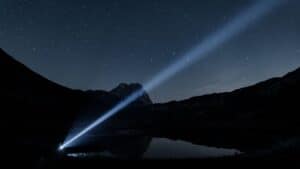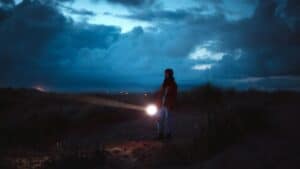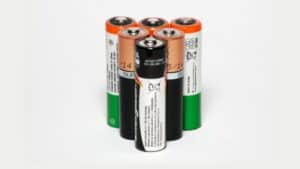Heading out into the wilderness for a camping adventure can be thrilling, but safety should always be a top priority.
Proper planning, packing essential supplies, and knowing basic wilderness safety protocols can significantly reduce risks and ensure a memorable camping trip for all the right reasons. This includes understanding weather patterns, wildlife behavior, and campsite selection criteria before setting up that tent.
This article will provide 10 camping safety tips to help you get a worry-free outdoor adventure.

Safety should always be your top priority when venturing into nature for a camping trip. Taking proper precautions can make the difference between a memorable outdoor adventure and a potentially dangerous situation.
#1 Choose The Right Campground
Selecting an appropriate campsite and shelter is fundamental to camping safety. Always check for hazards before setting up camp, including dead trees or branches that could fall, ant hills, or areas prone to flooding.
Look for level ground when pitching your tent to ensure comfort and prevent water from flowing in during rain. Stay at least 200 feet away from water sources to minimize environmental impact and avoid areas that could flood quickly.
When camping in bear country, set up your cooking area at least 100 yards from your sleeping area. This distance helps keep food smells away from where you sleep.
Consider weather conditions when choosing your shelter. A lightweight tent might be perfect for summer, but inadequate for cold or stormy weather. Always bring a ground tarp to place under your tent for added protection from moisture and tears.
#2 Stay Up-to-Date With The Weather Forecast
Weather conditions can change rapidly in outdoor settings. Before departing, check extended forecasts for your destination and continue monitoring updates throughout your trip.
Download a reliable weather app that works offline, as cell service may be limited. Many modern apps can provide alerts even with minimal connectivity.
Learn to recognize warning signs of changing weather. Dark clouds building on the horizon, sudden temperature drops, or increasing wind speeds can indicate approaching storms.
If camping in mountainous regions, be aware that afternoon thunderstorms are common in summer months. Plan hikes for early morning to avoid being exposed during peak storm times.
Always have a contingency plan for severe weather. Know where the nearest shelter is, whether it’s your vehicle or a designated storm shelter at established campgrounds. Pack extra tarps and ropes to secure your site in windy conditions.
#3 Bring A First Aid Kit With You
A well-stocked first aid kit is non-negotiable for any camping trip. Include basics like adhesive bandages, gauze pads, antiseptic wipes, tweezers, and scissors.
Pack medications appropriate for your destination and activities – pain relievers, antihistamines for allergic reactions, and any prescription medications needed by group members. Consider including specific treatments for your environment, such as blister treatment for hiking trips or burn cream if you’ll be cooking over fires.
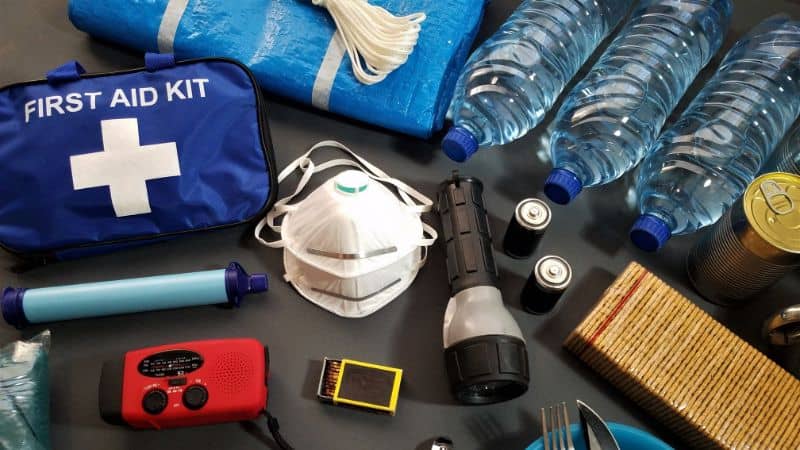
First Aid Kit Essentials:
- Bandages (various sizes)
- Antiseptic solution/wipes
- Tweezers and scissors
- Medical tape
- Pain relievers
- Antihistamines
- Hydrocortisone cream
- Insect sting relief
- Emergency blanket
- CPR face shield
Take a basic first aid course before your trip to learn how to properly address common camping injuries. Knowledge of how to splint a sprain or treat a burn can be invaluable when medical help is far away.
#4 Keep Food Safety in Mind
Proper food handling prevents both foodborne illness and unwanted wildlife encounters. Plan meals carefully, choosing foods that won’t spoil easily in your camping environment.
Use a quality cooler with plenty of ice for perishable items. Keep raw meats separate from ready-to-eat foods, and use different cutting boards and utensils when preparing them. Wash hands frequently using biodegradable soap and clean water.
In bear country, use approved bear-resistant containers to store all food, cooking equipment, and scented items. Even in areas without bears, keep food secured from raccoons, squirrels, and other creatures attracted to your supplies.
Never store food in your tent – this rule applies everywhere. Hang food from trees at least 10 feet high and 4 feet from the trunk when bear containers aren’t available.
Dispose of food waste properly in designated receptacles or by packing it out. Clean cooking areas thoroughly after each meal to eliminate attractant odors.
#5 Bring LED Camping Lanterns
Modern LED lanterns provide bright, efficient illumination that can last for many nights on a single set of batteries.
M&F Opto’s Camping Lanterns offer excellent solutions. Consider the Portable Solar Power Camping Lantern for sustainable charging or the Super Bright Camping Lantern with 1000 Lumens and USB Power Bank for powerful illumination and device charging.
M&F Opto’s lanterns are multi-functional, energy-efficient, and often weatherproof (IPX4 rated), making them reliable for any trip. Many, like the Versatile Magnetic Camping Light & Power Bank, also include useful features like power bank capabilities.
Recommended Lighting Setup:
- Main camp lantern (200+ lumens)
- Personal headlamps for each camper
- Small tent lights
- Emergency backup lights with fresh batteries
Look for water-resistant models with adjustable brightness settings. Some lanterns now include USB charging ports for phones and other devices, adding versatility to your camping setup.
Avoid using fuel-based lanterns inside tents due to fire and carbon monoxide risks. LED alternatives provide safe, cool lighting without these dangers. Pack extra batteries and store them in a waterproof container to ensure you’re never left in the dark.
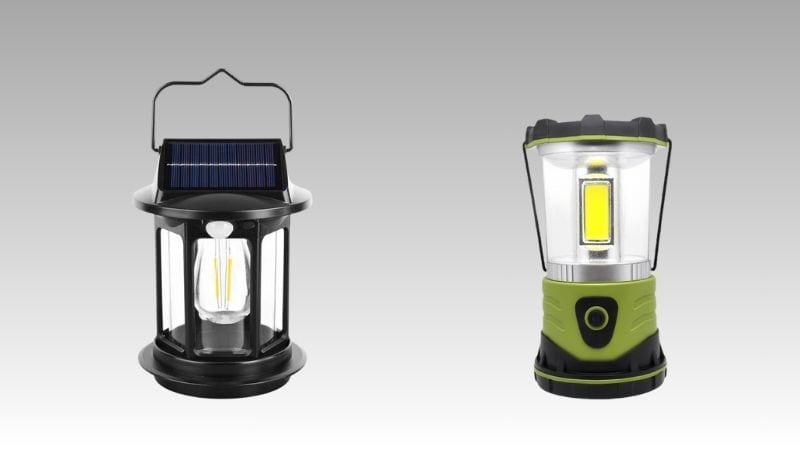
#6 Use Insect Protection
Insects can turn a pleasant camping trip into an uncomfortable experience and may transmit diseases. Apply EPA-registered insect repellent containing DEET, picaridin, or oil of lemon eucalyptus to exposed skin and clothing.
Physical barriers provide excellent protection:
- Wear long sleeves and pants (especially at dawn and dusk)
- Choose light-colored clothing to spot ticks easily
- Use fine-mesh bug nets over beds and tent entrances
To further enhance comfort, consider M&F Opto’s LED Mosquito Camping Lights. The 2-in-1 LED Mosquito Killer Lamp, for example, provides campsite illumination while its UV light attracts and eliminates flying insects. These specialized lanterns help create a more enjoyable, bug-free environment.
Also, choose campsites away from standing water and use tent screens. Combining these strategies with M&F Opto’s mosquito solutions offers strong protection.
#7 Be Aware Of Allergies
Understanding and preparing for allergic reactions can prevent serious medical emergencies while camping. Before your trip, identify all allergies within your group, including food, insect, and plant-based reactions.
Pack appropriate medications such as antihistamines, prescribed EpiPens, and any other allergy-specific treatments. Make sure everyone in your group knows where these items are stored and how to administer them in an emergency.
Those with severe food allergies should prepare all their own meals to prevent cross-contamination. Label personal food items clearly to avoid mix-ups.
Learn to identify common allergenic plants like poison ivy, poison oak, and poison sumac that may be present in your camping area. The rule “leaves of three, let it be” can help avoid poison ivy contact.
#8 Protect Your Skin From The Sun
Sun exposure can quickly ruin a camping trip if proper precautions aren’t taken. Even on cloudy days, harmful UV rays can cause painful sunburns and increase the risk of skin damage.
Must-have sun protection items:
- Broad-spectrum sunscreen (SPF 30+)
- Wide-brimmed hat
- Sunglasses with UV protection
- UPF-rated clothing
Apply sunscreen 20 minutes before sun exposure and reapply every two hours, especially after swimming or sweating. Don’t forget often-missed areas like ears, back of neck, and tops of feet.
For extended outdoor activities, consider scheduling them during early morning or late afternoon when the sun’s rays are less intense. Setting up camp with shade options will provide necessary relief during peak sun hours.
#9 Stay Hydrated
Water is crucial for regulating body temperature and maintaining energy levels while camping. Dehydration can develop quickly, especially during physical activities or in hot weather.
Daily water requirements:
| Activity Level | Recommended Water Intake |
| Light | 2-3 liters |
| Moderate | 3-4 liters |
| Strenuous | 4+ liters |
Always bring more water than you think you’ll need, or carry a reliable water filtration system if camping near natural water sources. Purification tablets or portable filters can make stream or lake water safe to drink.
Watch for signs of dehydration including headache, dizziness, dark urine, or extreme thirst. Sports drinks can help replace electrolytes lost through sweating, but plain water should be your primary hydration source.
#10 Watch Out For Wildlife
Wildlife encounters can be thrilling but require caution and respect for both human and animal safety. Most wild animals prefer to avoid humans but may become dangerous if they feel threatened.
Wildlife safety basics:
- Never feed wild animals
- Store food in sealed containers
- Keep cooking areas separate from sleeping areas
- Make noise while hiking to avoid surprising animals
Learn about the specific wildlife in your camping area before your trip. In bear country, carry bear spray and know proper usage techniques. For smaller creatures like snakes or spiders, watch where you place hands and feet, especially around rocks or fallen logs.
If you encounter larger wildlife, maintain a safe distance and never run, which can trigger predatory instincts. Instead, back away slowly while facing the animal and speaking in a calm, firm voice.
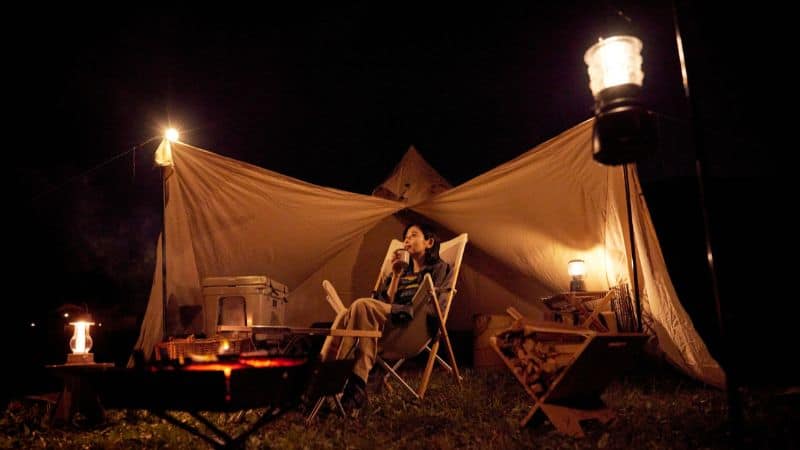
Camping Mistakes To Avoid
Many campers make simple errors that can turn a pleasant outdoor adventure into a challenging ordeal. Being aware of these common mistakes can help ensure a safe and enjoyable camping experience.
Poor campsite selection is a frequent error that can ruin a trip. Avoid setting up camp in low-lying areas that might flood during rain or directly under dead trees that could fall in strong winds.
Inadequate preparation for weather changes leads to discomfort and potential danger. Always check weather forecasts before departing and pack appropriate clothing for unexpected temperature drops or precipitation.
Forgetting essential gear happens even to experienced campers. Create a comprehensive checklist and verify all items before leaving home to avoid being without crucial supplies.
Improper food storage attracts unwanted wildlife to your campsite. Use bear-resistant containers or hang food from trees away from your sleeping area to prevent nighttime visitors.
Common Forgotten Items:
- First aid kit
- Extra batteries
- Waterproof matches
- Multi-tool
- Insect repellent
Pack more water than you think necessary or bring reliable filtration devices if natural sources are available.
Arriving too late to set up camp properly forces rushed decisions and potential safety oversights. Plan to reach your destination with several hours of daylight remaining for proper setup.
Leaving trash behind damages the environment and attracts animals. Always follow the “pack it in, pack it out” principle and leave your campsite cleaner than you found it.




